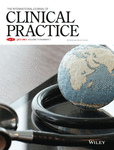Patients undergoing assisted peritoneal dialysis to show a better technique survival: A competing risk analysis
Xiaomei Jiang and Yun Wang contributed equally to this paper.
Funding information
The survey was supported by Suzhou science and technology development plan (SYS2020026)
Abstract
Aims
To compare patient mortality and technique survival between patients undergoing assisted peritoneal dialysis (aPD) and self-care peritoneal dialysis (sPD).
Methods
Patients who underwent peritoneal dialysis (PD) at the dialysis center of Second Affiliated Hospital of Soochow University from January 1, 2012 to December 31, 2016, were included and followed to December 31, 2019. Subjects were divided into aPD and sPD groups according to whether the patient could independently complete the PD procedure. Differences in mortality and technique failure rates were compared using competing risk analysis.
Results
A total of 384 patients were included in this study, with 274 patients in the sPD group and 110 patients in the aPD group. The multivariate competing risk regression analysis revealed that age (HR 1.03,95%CI 1.01-1.05, P < .001), aPD (HR 1.84,95%CI 1.10-3.08, P = .02), diabetes (HR 1.51, 95%CI 1.00-2.30, P = .05), residual renal function (HR 0.89, 95%CI 0.82-0.97, P = .005) and serum albumin level (HR 0.92, 95% CI 0.89-0.96, P < .001) were the independent risk factors for mortality. Besides, technique failure in aPD patients was lower than in the sPD group (HR 0.85, 95% CI 0.68-0.97, P = .03).
Conclusion
These results found that aPD patients had higher mortality rates but lower technique failure rates than sPD patients. Higher mortality in aPD is probably related to the negative selection of the more comorbid patients.
DISCLOSURES
Xiaomei Jiang and Yun Wang contribute equally to this article. We certify that all authors have no financial or other conflicts of interest connected with the submitted article.
Open Research
DATA AVAILABILITY STATEMENT
The datasets generated and/or analyzed during the current study are not publicly available. The participant consent forms did not address open public access to the data because of limitations of the research ethics approval by the Second Affiliated Hospital of Soochow University's ethical committee.




